mountains and molehills
funny, music, true, Yakima March 15th, 2011Like most kids, I spent the first decade or so of my musical life listening to my parents’ record collection, which consisted almost entirely of classical music, with the barest minimum of rock (The Beatles, Simon & Garfunkel, Mamas and the Papas, etc.) thrown in for good measure. My dad’s rare ventures into so-called rock included easy listening stuff like the Carpenters, which made my brother and me cringe. By the time I was about twelve years old, I finally discovered that I could have a radio in my room, and that radios had stations that could be changed. I quickly found out about NPR, because they played a radio version of The Hitch-Hiker’s Guide to the Galaxy, which I still think is one of the funniest and most brilliant books ever written. I also found out about heavy metal, which was popular at the time, and which changed my life forever.
There was a late-night (ten o’clock is late-night when you’re thirteen years old) show called Metal Shop, which introduced me to a whole new style of music that I would call my own for the next few years. The show has a newish online presence, albeit without the original host, but it will give you an idea of the kind of bands they played. The ones I that knocked me out early on were Dokken, Ratt and Twisted Sister, but I eagerly devoured most of what the show offered up each week. My brother dutifully followed suit, and before long, we were listening to all the metal masters of the day. I got my first electric guitar a month after my fifteenth birthday, and this is about all anyone saw of me for the next two years.
I’m happy to have a scanner, finally, so that pictures like the one of my brother in Kiss makeup can finally see the light of day. I’m sure he’ll be thrilled about this.
I’m sharing it here because A) it’s priceless and I love it, and B) he’s standing in my doorway, so you can see that I had corkboard panels covering my wall, and the entire thing was covered with pictures cut out from magazines like Hit Parader and Circus. From the top down, they are pictures of Aerosmith, Ratt, the Scorpions, Eddie Van Halen, and Kiss. You’re welcome.
All of this presented a problem for our mom, who was becoming more and more conservative as the years progressed. She was worried about the state of our souls, and she would give us books by Christian authors like Bob Larson, who was most famous for his theories about the supposed practice of the ‘backward masking’ of hidden Satanic messages that only appeared in songs when the songs were played in reverse.
Bob is still around and doing his thing, and his focus these days seems to have shifted from the evils of rock music to the exorcism of demons, but back in the day he would spend all his time decrying heavy metal and playing song after song while he did so. He would compare the supposed innocence of the regular version of a song, but as soon as he played the record backwards, its subversive and insidious ‘real’ meaning was revealed. One of the most famous examples was “Another One Bites the Dust” by Queen, which said, upon reversal, “Decide to smoke marijuana.” Or DID it?
The best times on the show were when he would open up the phone lines and take callers. He would argue passionately with the ones who found his claims ridiculous, and he would ‘save’ the ones who felt they needed to repent, right there on the air. It made for hilarious and riveting radio.  When a caller would say, “But, Bob, [insert famous musician’s name here] wears a cross all the time,” Bob would reply, “I bet he doesn’t even know what that cross means.” Our favorite quotation of his was about the leather-and-studs clothing that Judas Priest introduced, which was quickly adopted by a lot of the other bands. Bob made it very clear that “leather and studs are symbols of sado-masochism in the gay community.”
Who’d have thought at the time that Rob Halford of Judas Priest (in the picture above) would, in fact, come out of the closet and announce his homosexuality a decade or so later? Who’d have thought that he spent much of his free time in gay S&M clubs, and that he would fashion the entire look for his band after the style of clothing that he’d seen and worn in the clubs? The mind boggles. All I can say is, when my brother and I were young, ideas like ‘the symbols of sado-masochism in the gay community’ would never have crossed our minds if it wasn’t for Bob Larson. We liked the music enough that we didn’t really care what people looked like, with the possible exception of Vinnie Vincent, who looked even more feminine than most of the other glam rockers at the time, which put him up against some serious competition.
At some point, I’ll have to write a separate entry about Vinnie Vincent, because his is a very interesting story, and a bit of a rags-to-riches-and-back-to-rags one, too. That’s neither here nor there, at least for the purposes of this story.
It was never our intention to emulate the rock-and-roll lifestyle; we were mostly well-adjusted kids who just wanted to listen to the music. One day, however, our mom decided that she’d had enough. She marched into my brother’s room, where he had a large poster of Poison on his wall. The bass player, Bobby Dall (I didn’t even have to look that up!), had a cigarette dangling from the side of his mouth.
“That’s disgusting,” my mom sneered. “Take it down.”
“What?” my brother asked. “No way!”
“Yes,” she said firmly. “Look at that; he’s got a cigarette hanging out of his mouth.”
“So? You think I’m gonna start smoking just because he does?”
“Well. . .maybe.”
“Oh yeah, right. Why do I have to take this down? Come here.” He ran into my room and pointed at a huge poster of Yngwie Malmsteen dressed in black, wearing a huge cross around his neck. “Look,” he continued, sarcasm dripping from his tongue, throwing Bob Larson’s quotations back into Mom’s face. “He’s wearing a cross. . .I bet he doesn’t know what that means! And all these guys are wearing leather and studs, which are the symbols of sado-masochism in the gay community!”
At that, Mom came bursting into my room, saying, “WHERE?”
I collapsed into laughter, and my brother was still consumed with rage, but after a few seconds he started to laugh too. He wasn’t about to take down that poster, though, especially since I had an entire wall devoted to all the same people, and I certainly wasn’t going to take anything down.  Mom stood and stared at my wall, seemingly for the first time, and she didn’t like it one bit. The symbols of sado-masochism in the gay community were everywhere, and so were the symbols of hedonism and satanism.
“I want this garbage taken down,” she said.
“No. Why is this such a big deal all of a sudden? These pictures have been up here for two years.”
“Well, take them down now.”
“No. I like them.”
My brother and I won that particular argument. I suspect that Mom realized it was a phase we were going through, and that we’d grow out of it soon enough. Or maybe she just gave in. Either way, we won, and the posters stayed up until we moved into our new house a couple of years later, by which time they had been replaced by world maps and posters of the Beatles.
In my experience, if you tell somebody they can’t have something, it only makes them want it more. When I was in college, there was a pathetic demonstration of some sort (I don’t even remember what the issue was) that involved people waving signs that warned other people not to burn the flag.  One of my friends said, dryly, “I never wanted to burn a flag until they told me I couldn’t.” Also, I worked at a record store during the time that 2 Live Krew’s Nasty As They Wanna Be came out. That turd of an album sat untouched on the shelf for months at a time, and we couldn’t pay people to take a copy of it. As soon as it got banned, however, we couldn’t order copies of it fast enough. People who didn’t even like rap were buying them just to see what the fuss was about.
The point of all this, to the extent that there is one, is that kids turn out fine most of the time, and the music they listen to is the least of their problems.  Pick your battles, parents, and stay involved with their lives, but be careful not to make mountains out of molehills. If you do, you’ll only make the kids more likely to rebel, which will exacerbate the issues you were trying to eliminate in the first place.
By way of a denouement, here’s a classic Bloom County cartoon I had on my wall back then, from when Apple introduced the first Macintosh computers. I figured it would tie in nicely with this particular discussion.
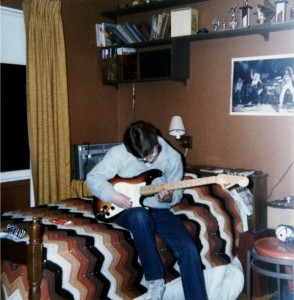
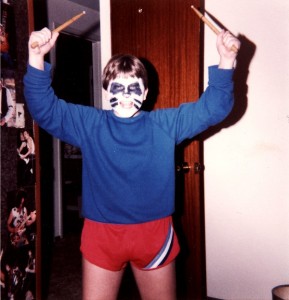
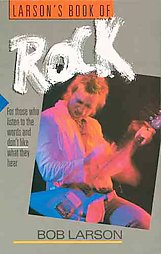
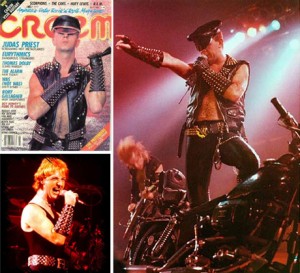

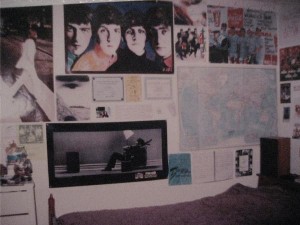
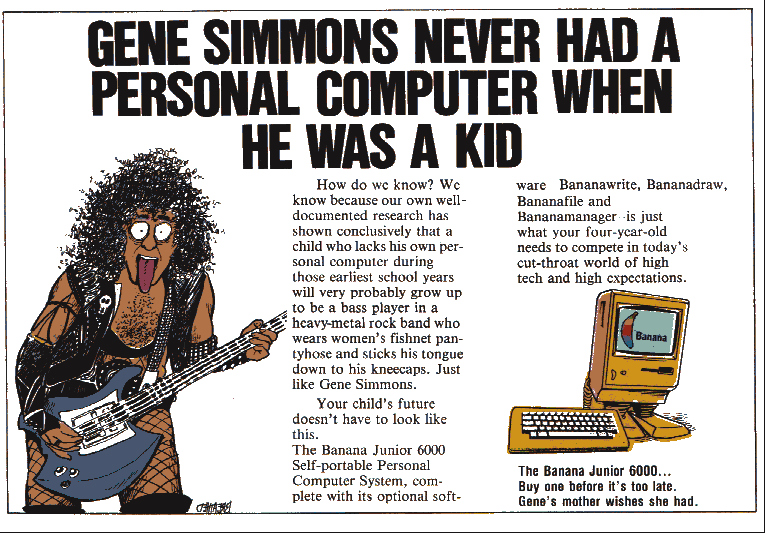



March 15th, 2011 at 6:25 pm
i think this is one of my favorite blogs you’ve written :)
March 16th, 2011 at 12:50 am
Brilliant, Now I’m waiting for the blog entry that details the “evils of 80’s smooth jazz”.